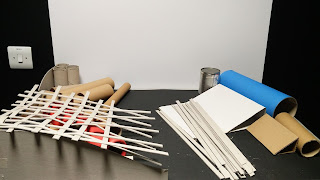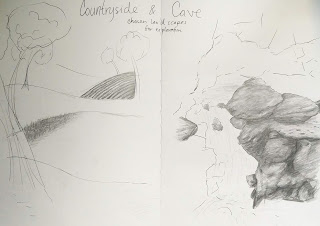Final pieces of the puzzle
I planned out the time in this week to evaluate and conclude my theoretical and practical research. Although I recieved information from TECARAT the day before hand in, it was still very useful and I spent a lot of this time embedding it in.
I was happy that this time I managed to get in contact with relevant practitioners and it helped me to understand my case studies a lot more. Another improvement against previous years was also that I typed up my last draft of the essay in Microsoft Word and learned how to make it consistent in a time-efficient manner. I just wish I knew about it sooner than last week. But it is hard to find something if I am not sure what I am looking for.
Doing some reading on building questionnaires helped me to be more confident with getting accurate and topic relevant results. I just wish I have considered the colour of the pictures used in the questionnaire more as this has hugely affected the perception of the question. But even then, the outcome helped me to identify how the interpretation of an abstract structure can be influenced by the use of colour.
I was happy that this time I managed to get in contact with relevant practitioners and it helped me to understand my case studies a lot more. Another improvement against previous years was also that I typed up my last draft of the essay in Microsoft Word and learned how to make it consistent in a time-efficient manner. I just wish I knew about it sooner than last week. But it is hard to find something if I am not sure what I am looking for.
Doing some reading on building questionnaires helped me to be more confident with getting accurate and topic relevant results. I just wish I have considered the colour of the pictures used in the questionnaire more as this has hugely affected the perception of the question. But even then, the outcome helped me to identify how the interpretation of an abstract structure can be influenced by the use of colour.
I have been more consistent with keeping Bibliography too, trying harder to not leave it to the last minute, that made writing of the essay a lot easier.
However, my final outcome has changed compared to my Proposal. This was pretty much influenced by the research I have gathered after the proposal. I am still happy with the outcome as it has helped me gain insight into a number of techniques that I hope to apply to my Extended Practice. But it also identified a gap in resources. Some practitioners went around these but I am more of a rule follower, therefore a collection of techniques and materials applicable to animation sets would really help me at times when I tend to overthink pros and cons of techniques in my head instead of finding out what it is like using them in animation sets.
I am happy with the presentation of my final outcome, due to its size it cannot be submitted as a physical model so I made a turn around video. It took me two takes to get it right after I put a piece of cloth underneath the set and marked out key points it had to reach when turning. In its longest dimension it was slightly hanging over the table and so the base is slightly cut off in the video. I animated it frame by frame and edited in Photoshop afterwards. See the difference below.
I have included an example of this. bla blah
However, my final outcome has changed compared to my Proposal. This was pretty much influenced by the research I have gathered after the proposal. I am still happy with the outcome as it has helped me gain insight into a number of techniques that I hope to apply to my Extended Practice. But it also identified a gap in resources. Some practitioners went around these but I am more of a rule follower, therefore a collection of techniques and materials applicable to animation sets would really help me at times when I tend to overthink pros and cons of techniques in my head instead of finding out what it is like using them in animation sets.
I am happy with the presentation of my final outcome, due to its size it cannot be submitted as a physical model so I made a turn around video. It took me two takes to get it right after I put a piece of cloth underneath the set and marked out key points it had to reach when turning. In its longest dimension it was slightly hanging over the table and so the base is slightly cut off in the video. I animated it frame by frame and edited in Photoshop afterwards. See the difference below.
I have included an example of this. bla blah














































